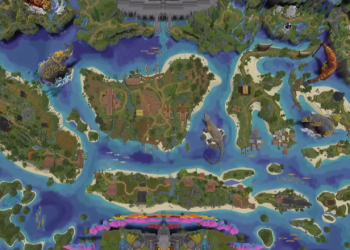Jakarta, Indonesia Sentinel — Indonesia’s National Research and Innovation Agency (BRIN) is intensifying its tsunami research by refining scientific characterization based on their causes, whether triggered by tectonic earthquakes or non-seismic volcanic eruptions. The agency also incorporate cultural research to track tsunami history across the archipelago.
Purna Sulastya Putra, a senior researcher at BRIN’s Geological Disaster Research Center, said this characterization is critical for improving the accuracy of disaster-source identification and mitigation efforts. Each type of tsunami in Indonesia, he noted, carries unique traits in wave length, reach, and sediment characteristics.
“Tsunamis caused by landslides, like in Palu or Anak Krakatau, typically have short waves and limited reach. Meanwhile, tectonic tsunamis can travel much farther inland, as seen in the 2004 Aceh-Nias disaster,” Purna told reporters in Jakarta on Wednesday, as reported by Antara.
Understanding these differences in sediment deposits, he said, helps scientists more accurately analyze ancient tsunamis, particularly in regions without written historical records.
BRIN’s team is currently studying two major events: the 2018 Palu tsunami and the tsunami generated by the eruption of Mount Anak Krakatau, extracting geological parameters to distinguish the wave-forming mechanisms.
“This approach is vital for mitigation because it supports the design of early warning systems tailored to the specific threat sources in each region,” Purna said, adding that geological mapping of tsunami types can also expand Indonesia’s national risk-based coastal development database.
Cultural Research on Tsunami
BRIN is also incorporating cultural research to track tsunami history. One focus is the Batu Kandiri Site in Pangandaran, West Java—mentioned in the 15th-century travel records of Dujang Ramanik and abandoned shortly afterward. Purna said researchers suspect a tsunami about 500 years ago, alongside possible conflicts, contributed to the site’s desertion.
“Stories of giant waves, legends of the Queen of the Southern Sea, or abandoned sites may reflect a community’s collective memory of past disasters,” Purna said. “Our aim is not to dismiss myths but to enrich understanding through scientific evidence for use in mitigation.”
Read Also:
Megathrust Earthquakes Threaten Indonesia, Triggering 65-Foot Tsunami!
The paleotsunami project employs stratigraphy, sediment analysis, and geospatial mapping to identify ancient tsunami sand deposits, complemented by the study of oral traditions passed down through generations. This multidisciplinary approach blends geology, archaeology, history, and anthropology, offering new insights into disasters absent from written records but embedded in local culture.
He said that BRIN plans to expand its research to Cilacap, Kebumen, Yogyakarta, and southern Bali in the coming years.
(Raidi/Agung)

























